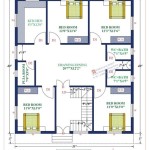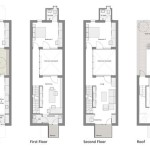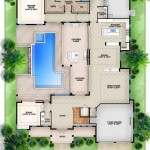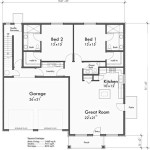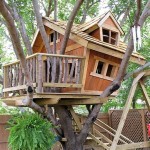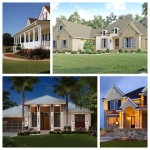House plans with in-law apartments are blueprints or designs for constructing a house that includes a separate living space for elderly relatives, extended family, or guests. These apartments typically feature a bedroom, bathroom, kitchenette, and living area, providing privacy and convenience for both residents and homeowners.
With the increasing number of multi-generational households, house plans with in-law apartments are becoming increasingly popular. They offer a flexible solution for families who want to care for aging parents or have loved ones living nearby. For example, an in-law apartment can provide a comfortable and private space for grandparents to live while still being close to their family and receiving the support they need.
In this article, we will explore the benefits, considerations, and different types of house plans with in-law apartments. We will also provide tips on how to design and construct an in-law apartment that meets the needs of both residents and homeowners.
Here are 9 important points to consider when planning a house with an in-law apartment:
- Separate entrance
- Private living space
- Kitchenette or full kitchen
- Accessible bathroom
- Universal design features
- Proximity to main house
- Safety and security
- Shared spaces
- Legal considerations
By carefully considering these factors, you can create a house plan with an in-law apartment that meets the needs of both residents and homeowners, and provides a comfortable and supportive living environment for all.
Separate entrance
A separate entrance for the in-law apartment is essential for privacy and independence. It allows residents to come and go as they please without having to go through the main house. This is especially important for elderly or disabled residents who may need to use a wheelchair or walker.
- Convenience: A separate entrance makes it easy for residents to access their apartment without having to go through the main house. This is especially convenient for elderly or disabled residents who may have difficulty navigating stairs or long distances.
- Privacy: A separate entrance gives residents their own private space to come and go as they please. This is especially important for extended family members or guests who may not want to feel like they are intruding on the main household.
- Safety: A separate entrance can help to improve safety for both residents and homeowners. It allows residents to lock their own door and have their own private space, which can be especially important for elderly or vulnerable adults.
- Independence: A separate entrance gives residents a sense of independence and autonomy. They can come and go as they please without having to rely on the homeowners for access to the house.
When designing a separate entrance for an in-law apartment, it is important to consider the following factors:
- Location: The entrance should be located in a convenient and accessible location, but it should also be private and secure.
- Size: The entrance should be large enough to accommodate a wheelchair or walker, if necessary.
- Security: The entrance should be well-lit and secure, with a deadbolt lock and peephole.
A private living space is essential for any in-law apartment. This space should include a bedroom, bathroom, and living area that are separate from the main house. It should be large enough to accommodate the resident’s needs and provide them with a comfortable and private place to live.
- Bedroom: The bedroom should be large enough to accommodate a bed, dresser, and other furniture. It should also have a window to provide natural light and ventilation.
- Bathroom: The bathroom should be accessible and include a toilet, sink, and shower or bathtub. It should also have grab bars and other safety features for elderly or disabled residents.
- Living area: The living area should be large enough to accommodate a couch, chairs, and other furniture. It should also have a window to provide natural light and ventilation.
- Kitchenette: A kitchenette is a small kitchen that includes a sink, refrigerator, and microwave. It is a convenient addition to an in-law apartment, especially for residents who want to be able to prepare their own meals.
When designing a private living space for an in-law apartment, it is important to consider the following factors:
- Size: The space should be large enough to accommodate the resident’s needs and provide them with a comfortable and private place to live.
- Layout: The space should be laid out in a way that is accessible and easy to navigate, especially for elderly or disabled residents.
- Privacy: The space should be private and separate from the main house. It should have its own entrance and be soundproofed to ensure privacy.
- Safety: The space should be safe and secure. It should have grab bars and other safety features for elderly or disabled residents, and it should be well-lit and have a smoke detector and fire extinguisher.
Kitchenette or full kitchen
Whether to include a kitchenette or a full kitchen in an in-law apartment is a matter of personal preference and depends on the needs of the residents. A kitchenette is a small kitchen that includes a sink, refrigerator, and microwave. It is a convenient addition to an in-law apartment, especially for residents who want to be able to prepare their own meals or snacks. A full kitchen includes a stove, oven, and dishwasher in addition to the sink, refrigerator, and microwave. It is a more expensive option, but it gives residents more flexibility and the ability to cook more elaborate meals.
Here are some factors to consider when deciding whether to include a kitchenette or a full kitchen in an in-law apartment:
- Cooking needs: Consider the cooking needs of the residents. Do they enjoy cooking and want to be able to prepare their own meals, or are they more likely to eat out or order takeout? If the residents are likely to do a lot of cooking, a full kitchen may be a better option.
- Space: Consider the available space in the in-law apartment. A full kitchen requires more space than a kitchenette. If space is limited, a kitchenette may be a better option.
- Budget: Consider the budget for the in-law apartment. A full kitchen is more expensive to install than a kitchenette. If budget is a concern, a kitchenette may be a better option.
- Lifestyle: Consider the lifestyle of the residents. Are they active and healthy, or do they have mobility issues? If the residents have mobility issues, a kitchenette may be a better option, as it is easier to navigate than a full kitchen.
Ultimately, the decision of whether to include a kitchenette or a full kitchen in an in-law apartment is a personal one. There is no right or wrong answer, and the best option will depend on the specific needs and preferences of the residents.
In addition to the factors listed above, there are a few other things to keep in mind when designing a kitchenette or full kitchen in an in-law apartment:
- Accessibility: Make sure the kitchen is accessible to all residents, including those with mobility issues. This means providing wide doorways, accessible countertops, and appliances that are easy to reach and use.
- Safety: Install safety features such as grab bars, non-slip flooring, and smoke and carbon monoxide detectors.
- Ventilation: Provide adequate ventilation to prevent the build-up of cooking odors and fumes.
- Lighting: Provide good lighting in the kitchen, especially over the cooking area and sink.
Accessible bathroom
An accessible bathroom is an essential feature of any in-law apartment, especially for elderly or disabled residents. It should be designed to be safe and easy to use for people with mobility issues.
Here are some important considerations for designing an accessible bathroom in an in-law apartment:
- Wide doorway: The doorway to the bathroom should be at least 32 inches wide to accommodate a wheelchair or walker.
- Non-slip flooring: The flooring in the bathroom should be non-slip to prevent falls.
- Grab bars: Grab bars should be installed around the toilet, shower, and bathtub to provide support and stability.
- Accessible shower: The shower should be large enough to accommodate a wheelchair or walker, and it should have a built-in seat and a hand-held showerhead.
- Accessible bathtub: If a bathtub is included, it should have a built-in seat and a grab bar.
- Raised toilet: The toilet should be raised to a height of 17-19 inches to make it easier to sit down and stand up.
- Vanity: The vanity should be accessible to someone in a wheelchair, with a height of 30-32 inches and a knee space of at least 27 inches wide.
- Mirror: The mirror should be placed at a height that is accessible to someone in a wheelchair.
- Lighting: The bathroom should be well-lit, with good lighting over the mirror, shower, and toilet.
In addition to these considerations, it is also important to make sure that the bathroom is well-ventilated to prevent the build-up of moisture and mold.
By following these guidelines, you can create an accessible bathroom that is safe and easy to use for all residents, regardless of their mobility level.
Universal design features
Universal design features are design elements that make a space accessible and usable for people of all ages and abilities, including those with disabilities. When designing a house plan with an in-law apartment, it is important to incorporate universal design features to ensure that the space is safe and comfortable for all residents.
- No-step entry: A no-step entry allows people to enter and exit the home without having to navigate steps or stairs. This is especially important for people with mobility issues, such as those who use wheelchairs or walkers.
To create a no-step entry, you can install a ramp or build the home on a level lot without any steps.
- Wide doorways: Wide doorways allow people to easily enter and exit rooms, even if they are using a wheelchair or walker. All doorways in an in-law apartment should be at least 32 inches wide.
In addition to being wide, doorways should also be free of any obstacles, such as furniture or rugs, that could make it difficult to navigate.
- Accessible bathroom: An accessible bathroom is a bathroom that is designed to be safe and easy to use for people with disabilities. Accessible bathrooms typically include features such as a roll-in shower, a raised toilet, and grab bars.
For more information on designing an accessible bathroom, please see the section on Accessible bathrooms.
- Lever handles: Lever handles are easier to use for people with limited hand strength or dexterity. All doors and faucets in an in-law apartment should have lever handles.
Lever handles are also a good choice for kitchens and bathrooms, as they can be easily operated with one hand.
By incorporating universal design features into the design of an in-law apartment, you can create a space that is safe and comfortable for all residents, regardless of their age or ability.
Proximity to main house
The proximity of the in-law apartment to the main house is an important consideration. On the one hand, you want the in-law apartment to be close enough to the main house so that residents can easily access the main house for meals, laundry, and other activities. On the other hand, you want the in-law apartment to be far enough away from the main house to provide residents with privacy and independence.
- Convenience: If the in-law apartment is located close to the main house, residents can easily access the main house for meals, laundry, and other activities. This can be especially convenient for elderly or disabled residents who may have difficulty getting around.
For example, if the in-law apartment is located on the first floor of the main house, residents can easily use the stairs or elevator to access the main house. If the in-law apartment is located in a separate building, residents can use a wheelchair ramp or golf cart to get to the main house.
- Privacy: If the in-law apartment is located far enough away from the main house, residents can have more privacy and independence. This can be especially important for extended family members or guests who may not want to feel like they are intruding on the main household.
For example, if the in-law apartment is located in a separate building on the property, residents can have their own private entrance and outdoor space. This can give them a sense of independence and autonomy.
- Safety: If the in-law apartment is located close to the main house, it can be easier to keep an eye on residents and ensure their safety. This can be especially important for elderly or disabled residents who may need assistance with daily tasks.
For example, if the in-law apartment is located on the same floor as the main house, caregivers can easily check on residents and provide assistance as needed. If the in-law apartment is located in a separate building, caregivers can use a security camera or intercom system to monitor residents.
- Independence: If the in-law apartment is located far enough away from the main house, residents can have more independence and autonomy. This can be especially important for extended family members or guests who want to feel like they are living in their own space.
For example, if the in-law apartment is located in a separate building on the property, residents can have their own private entrance, kitchen, and living room. This can give them a sense of independence and autonomy.
Ultimately, the best way to determine the proximity of the in-law apartment to the main house is to consider the needs of the residents. If the residents are elderly or disabled and need assistance with daily tasks, it may be best to locate the in-law apartment close to the main house. If the residents are extended family members or guests who want more privacy and independence, it may be best to locate the in-law apartment far enough away from the main house.
Safety and security
Safety and security are important considerations for any home, but they are especially important for homes with in-law apartments. Here are some safety and security features to consider when designing a house plan with an in-law apartment:
- Separate entrance: A separate entrance for the in-law apartment is essential for privacy and security. It allows residents to come and go as they please without having to go through the main house. This is especially important for elderly or disabled residents.
- Security system: A security system can help to deter crime and keep residents safe. Security systems can include features such as motion sensors, door and window sensors, and security cameras. To increase safety, install a monitored security system, which will alert a monitoring company if the alarm is triggered, and they will dispatch the authorities if necessary.
- Well-lit exterior: A well-lit exterior can help to deter crime and make it easier to see who is approaching the house. Make sure to install motion-activated lights around the exterior of the house, especially near entrances and walkways.
- Secure windows and doors: All windows and doors should be secure and have deadbolts. Consider installing security bars or window locks to further increase security.
In addition to these safety and security features, it is also important to develop a safety plan with all residents. The safety plan should include evacuation procedures, a list of emergency contacts, and a plan for what to do in case of a fire or other emergency.
Shared spaces
Shared spaces in a house plan with an in-law apartment are areas that are used by both the residents of the main house and the residents of the in-law apartment. These spaces can include the kitchen, dining room, living room, and outdoor areas.
When designing shared spaces, it is important to consider the needs of all residents. For example, if the main house residents have young children, it is important to create a space that is both child-friendly and adult-friendly. This could involve creating a play area in the living room or adding a fence around the pool.
It is also important to consider the privacy of all residents when designing shared spaces. For example, the in-law apartment should have its own private entrance and outdoor space. This will give residents a sense of privacy and independence.
Here are some tips for designing shared spaces in a house plan with an in-law apartment:
- Create a welcoming and inviting space: The shared spaces should be welcoming and inviting to all residents. This can be achieved by using warm colors, comfortable furniture, and inviting artwork.
- Consider the needs of all residents: When designing shared spaces, it is important to consider the needs of all residents. For example, if the main house residents have young children, it is important to create a space that is both child-friendly and adult-friendly.
- Provide privacy for all residents: The in-law apartment should have its own private entrance and outdoor space. This will give residents a sense of privacy and independence.
- Use flexible furniture: Flexible furniture can be used to create different configurations in the shared spaces. This can be helpful for accommodating different activities and needs.
By following these tips, you can create shared spaces that are both functional and inviting for all residents.
Legal considerations
There are a number of legal considerations to keep in mind when planning a house plan with an in-law apartment. These considerations include zoning laws, building codes, and property taxes.
Zoning laws
Zoning laws regulate the use of land and buildings in a particular area. These laws are typically enacted by local governments to ensure that the land is used in a way that is compatible with the surrounding community. In some cases, zoning laws may restrict the construction of in-law apartments. For example, zoning laws may require that in-law apartments be a certain size or that they be located in a certain part of the property. It is important to check with your local zoning board to determine if there are any restrictions on the construction of in-law apartments in your area.
Building codes
Building codes are regulations that govern the construction of buildings. These codes are typically enacted by state or local governments to ensure that buildings are safe and habitable. Building codes may include requirements for the size, layout, and construction of in-law apartments. For example, building codes may require that in-law apartments have a certain number of windows or that they be equipped with a certain type of fire alarm system. It is important to check with your local building department to determine if there are any building codes that apply to the construction of in-law apartments in your area.
Property taxes
Property taxes are taxes that are levied on real property. The amount of property taxes that you owe is typically based on the value of your property. In some cases, the construction of an in-law apartment may increase the value of your property. This could lead to an increase in your property taxes. It is important to factor in the potential increase in property taxes when budgeting for the construction of an in-law apartment.
Other legal considerations
In addition to the legal considerations discussed above, there are a number of other legal considerations to keep in mind when planning a house plan with an in-law apartment. These considerations include:
- Insurance: You will need to make sure that your homeowners insurance policy covers the in-law apartment. You may also need to purchase additional insurance to cover the belongings of the in-law apartment residents.
- Lease agreement: If you are planning to rent out the in-law apartment, you will need to create a lease agreement. The lease agreement should outline the terms of the tenancy, including the rent, the security deposit, and the rules and regulations.
- Estate planning: If you are planning to leave the in-law apartment to your heirs, you will need to make sure that your estate plan is up to date. You may also want to consider creating a trust to hold the in-law apartment.
By carefully considering the legal considerations discussed above, you can help to ensure that your house plan with an in-law apartment is successful.










Related Posts


